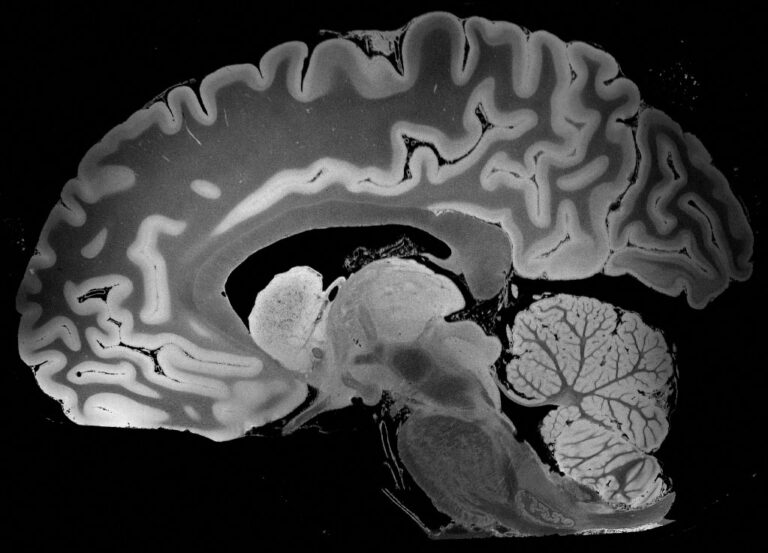New blood test can detect ‘toxic’ protein years before Alzheimer’s symptoms emerge, study shows
Today, by and large, patients receive a diagnosis of Alzheimer’s only after they exhibit well-known signs of the disease, such as memory loss. By that point, the best treatment options simply slow further progression of symptoms.
今天,总的来说,只有在病人表现出众所周知的症状,比如记忆力减退之后,他们才会被诊断为阿尔茨海默氏症。在这一点上,最好的治疗方案只是减缓症状的进一步发展。
But research has shown that the seeds of Alzheimer’s are planted years — even decades — earlier, long before the cognitive impairments surface that make a diagnosis possible. Those seeds are amyloid beta proteins that misfold and clump together, forming small aggregates called oligomers. Over time, through a process scientists are still trying to understand, those “toxic” oligomers of amyloid beta are thought to develop into Alzheimer’s.
但研究表明,阿尔茨海默病的种子早在几年甚至几十年前就埋下了,远早于认知障碍出现、使诊断成为可能的时间。这些种子是β淀粉样蛋白,错误折叠并聚集在一起,形成称为低聚物的小聚集体。随着时间的推移,科学家们仍在试图了解一个过程,这些“有毒”的β淀粉样蛋白寡聚物被认为会发展成阿尔茨海默氏症。
A team led by researchers at the University of Washington has developed a laboratory test that can measure levels of amyloid beta oligomers in blood samples. As they report in a paper published the week of Dec. 5 in the Proceedings of the National Academy of Sciences, their test — known by the acronym SOBA — could detect oligomers in the blood of patients with Alzheimer’s disease, but not in most members of a control group who showed no signs of cognitive impairment at the time the blood samples were taken.
由华盛顿大学的研究人员领导的一个团队开发了一种实验室测试,可以测量血液样本中β淀粉样蛋白低聚物的水平。正如他们在12月5日发表在《美国国家科学院院刊》上的一篇论文中所报告的那样,他们的测试(简称SOBA)可以检测出阿尔茨海默病患者血液中的低聚物,但在采集血液样本时没有表现出认知障碍迹象的对照组中的大多数成员中却不能检测出低聚物。
However, SOBA did detect oligomers in the blood of 11 individuals from the control group. Follow-up examination records were available for 10 of these individuals, and all were diagnosed years later with mild cognitive impairment or brain pathology consistent with Alzheimer’s disease. Essentially, for these 10 individuals, SOBA had detected the toxic oligomers before symptoms surfaced.
然而,SOBA确实在对照组的11个人的血液中检测到低聚物。这些人中有10人有随访检查记录,所有人都在几年后被诊断为轻度认知障碍或与阿尔茨海默病一致的脑病理。基本上,对于这10个人,SOBA在症状出现之前就检测到了有毒低聚物。
“What clinicians and researchers have wanted is a reliable diagnostic test for Alzheimer’s disease — and not just an assay that confirms a diagnosis of Alzheimer’s, but one that can also detect signs of the disease before cognitive impairment happens. That’s important for individuals’ health and for all the research into how toxic oligomers of amyloid beta go on and cause the damage that they do,” said senior author Valerie Daggett, a UW professor of bioengineering and faculty member in the UW Molecular Engineering & Sciences Institute. “What we show here is that SOBA may be the basis of such a test.”
“临床医生和研究人员想要的是一种可靠的阿尔茨海默病诊断测试,不仅是一种确认阿尔茨海默病诊断的测试,而且是一种可以在认知障碍发生之前检测出疾病迹象的测试。这对个人健康以及所有关于β淀粉样蛋白有毒寡聚物如何继续并造成它们所造成的损害的研究都很重要,”高级作者瓦莱丽·达格特说,她是华盛顿大学生物工程教授,也是华盛顿大学分子工程与科学研究所的教职员工。“我们在这里展示的是,SOBA可能是这种测试的基础。”
SOBA, which stands for soluble oligomer binding assay, exploits a unique property of the toxic oligomers. When misfolded amyloid beta proteins begin to clump into oligomers, they form a structure known as an alpha sheet. Alpha sheets are not ordinarily found in nature, and past research by Daggett’s team showed that alpha sheets tend to bind to other alpha sheets. At the heart of SOBA is a synthetic alpha sheet designed by her team that can bind to oligomers in samples of either cerebrospinal fluid or blood. The test then uses standard methods to confirm that the oligomers attached to the test surface are made up of amyloid beta proteins.
SOBA,代表可溶性低聚物结合测定,利用有毒低聚物的独特性质。当错误折叠的β淀粉样蛋白开始聚集成低聚物时,它们形成了一种称为α薄片的结构。α薄片通常在自然界中找不到,达格特团队过去的研究表明,α薄片倾向于与其他α薄片结合。SOBA的核心是她的团队设计的一种合成α薄片,可以与脑脊液或血液样本中的低聚物结合。然后,测试使用标准方法来确认附着在测试表面的低聚物是由β淀粉样蛋白组成的。
The team tested SOBA on blood samples from 310 research subjects who had previously made their blood samples and some of their medical records available for Alzheimer’s research. At the time the blood samples had been taken, the subjects were recorded as having no signs of cognitive impairment, mild cognitive impairment, Alzheimer’s disease or another form of dementia.
研究小组在310名研究对象的血液样本上测试了SOBA,这些研究对象之前已经将他们的血液样本和一些医疗记录提供给了阿尔茨海默氏症研究。在采集血液样本时,研究对象被记录为没有认知障碍、轻度认知障碍、阿尔茨海默病或其他形式的痴呆症的迹象。
SOBA detected oligomers in the blood of individuals with mild cognitive impairment and moderate to severe Alzheimer’s. In 53 cases, the research subject’s diagnosis of Alzheimer’s was verified after death by autopsy — and the blood samples of 52 of them, which had been taken years before their deaths, contained toxic oligomers.
SOBA在轻度认知障碍和中度至重度阿尔茨海默氏症患者的血液中检测到低聚物。在53个案例中,研究对象的阿尔茨海默氏症诊断在死后通过尸检得到了证实——其中52人的血液样本是在他们死前几年采集的,含有有毒低聚物。
SOBA also detected oligomers in those members of the control group who, records show, later developed mild cognitive impairment. Blood samples from other individuals in the control group who remained unimpaired lacked toxic oligomers.
记录显示,SOBA还在对照组成员中检测到低聚物,这些人后来出现了轻度认知障碍。对照组中其他未受损个体的血液样本缺乏有毒低聚物。
Daggett’s team is working with scientists at AltPep, a UW spinout company, to develop SOBA into a diagnostic test for oligomers. In the study, the team also showed that SOBA easily could be modified to detect toxic oligomers of another type of protein associated with Parkinson’s disease and Lewy body dementia.
Daggett的团队正在与华盛顿大学衍生公司AltPep的科学家合作,将SOBA开发成低聚物的诊断测试。在这项研究中,研究小组还表明,SOBA可以很容易地进行修饰,以检测与帕金森病和路易体痴呆相关的另一种蛋白质的有毒低聚物。
“We are finding that many human diseases are associated with the accumulation of toxic oligomers that form these alpha sheet structures,” said Daggett. “Not just Alzheimer’s, but also Parkinson’s, type 2 diabetes and more. SOBA is picking up that unique alpha sheet structure, so we hope that this method can help in diagnosing and studying many other ‘protein misfolding’ diseases.”
Daggett说:“我们发现许多人类疾病都与形成这些α薄片结构的有毒低聚物的积累有关。”“不仅是阿尔茨海默氏症,还有帕金森症、2型糖尿病等等。SOBA正在研究这种独特的α薄片结构,所以我们希望这种方法可以帮助诊断和研究许多其他‘蛋白质错误折叠’疾病。”
Daggett believes the assay has further potential.
Daggett相信这种检测方法有进一步的潜力。
Read more at ScienceDaily.com
在ScienceDaily.com上阅读更多











